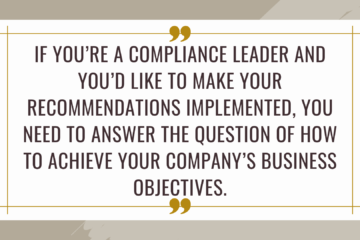Hard Truths About Onboarding Corporate Clients
Most compliance officers would agree that onboarding and reviewing corporate customers is one of the most painful and annoying KYC tasks ever. It takes forever, it’s confusing, and everyone involved (customers, UBOs, compliance officers, and relationship managers) hates every step of the process.
BUT WHY? Why cannot we all simplify the process and make it at least a little bit better?
Many entities that apply to become a customer will drop out and never complete their registration process.
Most applicants will send you inconsistent information.
It is not uncommon that onboarding and approving a corporate customer by a financial institution could take 4-6 months.
An unfortunate waste of resources occurs when you spend time reviewing difficult cases of clients who won’t transact or transact very little, while your best clients run out of patience waiting for the decision and go elsewhere.
This is what is “really” going on in the minds of many compliance officers when they review corporate clients’ applications:
- Day One. My sales and business development team always sends me some shady dubious cases, nobody really decent wants to work with us. This new application is probably yet another scam recently rejected by everyone else in the industry and now I have to deal with this crap. 😞
- Week three. Oh no, not again… Not only this new applicant is shady and inconsistent but they also make lots of money (or at least claim so), and most likely they will be laundering money with us because there is no way with this quality of documentation they could be an honest legit company.
- Month two. This is so typical… The client just sent us a library of random non-dated, non-signed, approved by nobody documents, and my business development team did a wonderful job of completing the client profile by filling in random confusing details everywhere possible.
- Month three. I still don’t understand how this applicant makes money. I have no idea how to interpret their flow of funds diagram or why they call themselves a “shared economy marketplace model”. I seriously doubt that their UBOs’ sources of funds were really the sales of real estate and personal savings, despite some old tax declarations they shared with us… I simply don’t see any connections and it makes no sense, but I cannot prove otherwise.
- Month six. We had a dozen of meetings and compliance reviews of this case thus far. Our business side just ignores everything I say about this client application or what’s wrong with them. They don’t see how the answers and documents we receive are inconsistent and nobody cares!!! The story does not add up, but I am sick and tired to be the only one talking about the risks and consequences. I give up. There is only one good thing about this potential client – they are very efficient at producing tons and tons of documents covering up their shady business. I personally would never go anywhere near them, but if our management is really so desperate to get this business, at least a) auditors will see that the compliance team tried very hard and made a lot of demands about this case, and b) if I personally don’t understand this client activity, nobody ever will, so they won’t be able to prove me wrong anyway. CASE APPROVED.
What are your thoughts on this? 💭


